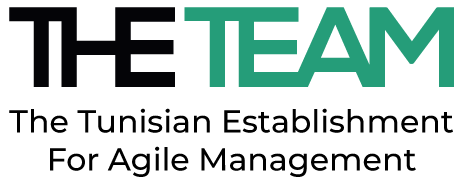TRAINIG : Agile methods through practice
Training Certification
Training Duration : 5 Days

This “Agile” training, focuses on the agile SCRUM approach. It allows you to understand the agile approach as a whole. This course is mainly made up of practical workshops and scenarios via projects that will be proposed and case studies, the theoretical parts being supported by different workshops.
At the end of this “Agile” training, participants will have:
- Understand the fundamental concepts, the contributions and the different roles of SCRUM.
- Apprehended the concept of Release and Sprint SCRUM.
- Understand the different execution phases of a SCRUM sprint.
- Provided with a complete overview of SCRUM tools.
This training is open to all company profiles and mainly to:
- This “Agile” training is open to all company profiles and mainly to project managers and their teams.
- Theoretical part over 3 days: :
- Observation of classic methods
- The Waterfall life cycle or V cycle
- The reasons for failures
- The Agile Manifesto
- The 4 principles and the 12 values
- The main principles: collaboration, involvement, communication
- Panorama of agile methods (Scrum, XP, Kanban, …)
- SCRUM presentation
- Terminology
- The SCRUM Team
- Sprints and release
- Communication in Scrum: The Different Types of Meetings
- Observation of classic methods
- Practical part over 2 days :
- The Pilot Project: A pilot project is offered to participants with the objective of putting the concepts presented into practice. SCRUM teams of 3 or 9 people will be formed.
- Presentation of the initial backlog by the Product Owner (the trainer).
- Estimate story size.
- Plan the project.
- Identify the different sprints and build a release plan.
- Develop a sprint blacklog: identify the tasks of the 1st sprint stories.
- Define for the project the meaning of the finished for a release, a sprint, a story.
- Test the results: perform acceptance tests.
- Follow up: update the burndown chart during a daily meeting.
- Update release and sprint planning following the appearance of new stories.
- The Pilot Project: A pilot project is offered to participants with the objective of putting the concepts presented into practice. SCRUM teams of 3 or 9 people will be formed.
